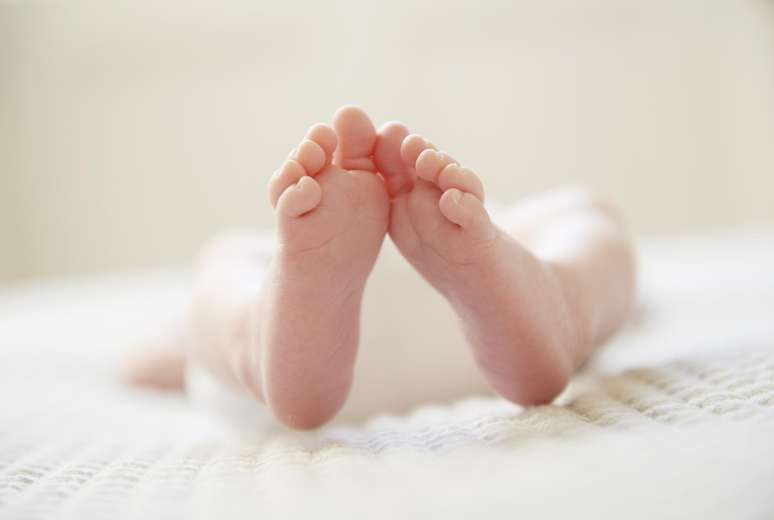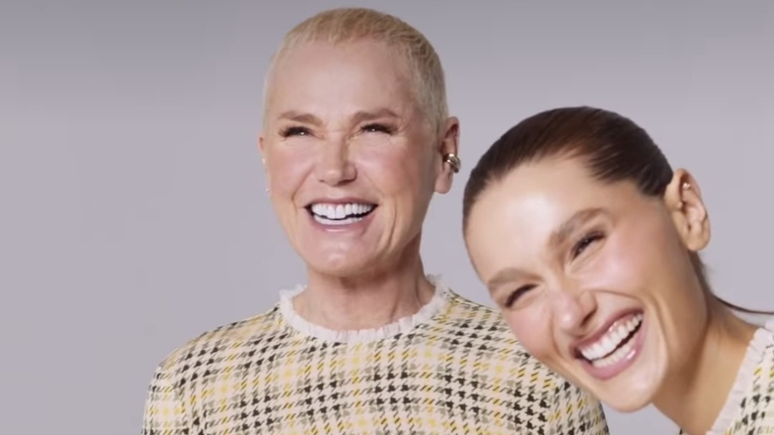html[data-range=”xlarge”] figure image img.img-1eaf31134a59e12f12c9bbaa39600f63edgwu51w { width: 774px; height: 520px; }HTML[data-range=”large”] figure image img.img-1eaf31134a59e12f12c9bbaa39600f63edgwu51w { width: 548px; height: 368px; }HTML[data-range=”small”] image figure img.img-1eaf31134a59e12f12c9bbaa39600f63edgwu51w, html[data-range=”medium”] figure image img.img-1eaf31134a59e12f12c9bbaa39600f63edgwu51w { width: 564px; height: 379px; }
Warning: This report contains testimonials and images that may raise awareness or sadden.
Sara Tonkin and her husband spent ten years trying to conceive until they decided to resort to IVF. Of the four viable embryos, one was implanted. The anticipation was great to find out if it had worked, if Sara was pregnant.
When the test at the pharmacy came back positive, the joy was enormous. “I always went to the bathroom to repeat the test, even though I knew I was pregnant, that it had worked. It was immense happiness.”
Sara is Brazilian and lives in London with her English husband. She says the pregnancy was smooth and uneventful.
“I was in good health, exercised, had no problems. Our baby was very healthy and we were preparing for a normal delivery.”
When she was 40 weeks pregnant, the hospital scheduled an induction.
“The induction was scheduled for when I was 41 1/2 weeks old. I went to the hospital on a Saturday afternoon and the doctor told me I didn’t need the induction and could go home and wait until Monday for contractions because I was Well”.
Sara came home and contractions started. She called the hospital, who advised her to wait until the interval between contractions was three minutes before returning. “I took a shower and waited until I was in a lot of pain and went to the hospital. It was Sunday.”
After arriving, she stayed in the waiting room for a while until she was seen by a nurse, who brought in a device to listen to the baby’s heartbeat. “They couldn’t find the beats. Until they brought in a little ultrasound machine. Again, no beats.”
It was then that Sara learned from the nurse the news most feared by a woman about to give birth. “She said, ‘Mom, I’m sorry, but the heartbeat isn’t here.'”
The autopsy will then reveal that there was meconium in the baby’s body, the feces of the fetus which, if eliminated in the amniotic fluid before birth, can be dangerous for both mother and baby.
Sara’s daughter had probably died of asphyxiation from contact with the meconium-containing fluid.
Sara says that, from that moment on, she experienced the most traumatic moment of her life. The physical pain of her contractions mingled with her despair at losing her daughter. She was already ten centimeters dilated and was sent to complete the normal delivery.
“I already started screaming there, because I already had a lot of pain and at the same time the emotion of feeling that I had lost my daughter, my daughter that I wanted so badly.”
The picture
When the baby was finally born, they asked her if she wanted to see and hold the little body. But in the moment of shock and pain, she said no.
“It was a lot of emotion. It was too much. In my mind, I just wanted to get out of that hospital.”
They also asked if she wanted a photo and souvenirs of her daughter, like locks of hair and fingerprints of her little feet.
“In shock, I refused everything. When it came time to leave, I asked to see my daughter. And when I held her, I collapsed. I clung to her and cried. But then I was leaving and my husband tried to take me,” Sara said.
“I didn’t spend much time with her and I regret it a lot, but I was in shock.”
A few days after arriving home, Sara was seen by a specialist bereavement nurse, a service provided by the NHS, the British public health service.
In the UK, the practice of taking pictures of stillborn babies and offering them to mothers has become an official guideline in several public hospitals.
Nurses are trained to register or work with NGOs that offer professional photography.
“She explained about an NGO called Remember my Baby who took the pictures for free and sent them to her. She said, ‘Sara, I’ll be there and make sure your daughter is well taken care of and she’s wearing the dress of your choice. .'”
The nurse’s empathy touched Sara who agreed to take the photos and to ask for the keepsake box that the hospital had provided her.
The little girl remained in the hospital because she would have undergone an autopsy and the funeral took place a few weeks later.
“I decided to go to the hospital on the day of the photos. I plucked up the courage and went. The photo session was already over, but I managed to keep the TT (nickname given by Sara to her daughter, later registered as her name) still once and notice details I’ve never seen before, the little hands, the hair. She was really beautiful.”
“That’s All I Have of Her”
Days later, photos of the baby arrived at Sara’s house, who was called by the couple TT or Tiny Tonkin (little Tonkin) during her pregnancy. He says it was a very emotional moment for her and her husband.
“I’m so thankful these photos were taken. It was so important to my grieving process. The photos are all I have of her.”
Sara has joined support groups for mothers who had stillborn babies and explains that talking about it, getting photos, acknowledging the existence and loss of the TT were important steps in coping with grief.
“I want to talk about TT, I want to show her a picture. When I’m in a difficult moment or I miss her a lot, I open them, I see the pictures, I show them.”
Sara says she has set up a corner in the house with photos of the baby. A year later, she had another daughter, who is now three years old, and in 2022, she had another baby boy, who is now seven months old.
“I showed it to my eldest daughter and explained: this is TT, her older sister, who passed away,” says Sara.
“One day I was sad and Luna (3-year-old daughter) asked me what was wrong. I said, ‘I really miss TT.’ She took the pictures, brought them to me, pointed to the picture and said, ‘Don’t be sad mom, TT is here.'”
The importance of photos in mourning
Psychologist Daniela Bittar, who specializes in maternal mourning, explains that the mother’s contact with the child and access to his photos are important in processing the loss.
She explains that, in Brazil, many people and even midwives think, due to lack of knowledge, that the best way to ease the pain of a mother who loses her baby at birth is to limit her contact with the baby who has died.
“Many times they tell the mother not to see the baby’s body, they do a caesarean section and they say things like: you’ll be fine soon, another baby is coming. Don’t think about it.”
In shock, many women do not want to see the baby’s body or follow the advice of doctors not to hold it. But then, this absence of goodbye makes the grieving process more difficult, says the psychologist.
“The vast majority of women who have had no contact with their child regret this. Many go into traumatic bereavement, becoming stagnant in a loop, thinking about what the baby’s face looked like, wanting to ‘unearth the baby’, thinking what could they have told her,” she explains.
The photos help the woman who, in shock from the loss, didn’t want to see her son, to say goodbye later, to acknowledge that child’s existence and begin the grieving process, Bittar says.
The photographer offers free pictures in MG
While the practice of photographing stillborn babies is widespread in the UK, in Brazil the subject is little discussed. The only existing project was initiated by photographer Paula Beltrão, in Minas Gerais.
Together with psychologist Daniela Bittar and midwife Mônica Nardy, she founded Grupo Colcha, to offer photography and psychological support to women who have lost their babies.
They have also formed a support group so they can share their experiences.
“With our children, we have photos in all situations. We take photos when they are just born, when they start walking. A mother who loses her child in childbirth will only have one moment with her child. record this unique memory,” Beltrão explained to BBC News Brasil.
According to Beltrão, photography also has the function of guaranteeing mothers a document that “demonstrates” or makes the existence of the child who died before birth “more real” to relatives and friends.
“These mothers who lose their babies when they are still very young or still in the womb are already mothers and they want and are proud to talk, to show their baby like any other mother,” she says.
“Photography helps fill the void of that void, of that silence, of that invisible mourning. It helps to recognize that child who was there, but that society has not seen.”
Psychologist Daniela Bittar explains that it is normal for relatives of women who have had stillborn children to not understand the extent of their pain.
This is because these family members and friends have not had the opportunity to meet the child and create fond memories with him.
But the baby’s mother has already developed an emotional and biological connection with him during pregnancy.
“The trauma often doesn’t come from the event itself. It comes from this child not being recognized. It becomes a ghost child,” she explains.
Acknowledging the loss to process the pain
Holding the baby and having photos of him helps in the grieving process, because mourning first and foremost involves acknowledging the person who has died, explains the psychologist.
“When a mother loses a two or three year old son, people are moved precisely because they put themselves in her shoes and clearly perceive the dimension of that pain. This child had a name, he had fond memories with multiple people,” she exemplifies.
“When the child dies in utero, this child has not been seen, has not built an affective memory with anyone, except with this mother. This woman is there completely tied to this child in a psychic, visceral way, but she does not have the pain and pain understood by society.”
According to Bittar, many women who, in the moment of shock, have not held their children in their arms and who have not had the opportunity to photograph them, end up trapped in a vicious cycle of guilt for not having been with their children, looking at them and saying Goodbye.
“That’s why it’s so important to have trained health professionals in maternity wards to explain the photos, record them, and help the mother process what happened.”
Sara Tonkin says, shortly after her stillborn daughter was born, she traveled to Brazil. There she realized that friends and relatives of hers were trying to avoid the subject, considering that talking about her death would only make her more depressed.
“Nobody knew how to deal with me, because they didn’t want to talk about it. They thought if they did, they would hurt me. But I thought it was worse, because for me they forgot about the TT. Nobody wanted to talk about it. And I like it when people talk about her.
It was in support groups, sharing her experience and listening to other mothers, that Sara first found acceptance and space to talk about her daughter.
And the photos helped her communicate to others the pain and longing she felt, but also all the love she has for TT.
“It’s very important to me to keep her memory alive. She lived inside me for 41 and a half weeks. She was born dead, but she existed. She is loved and I want her to be remembered.”
Source: Terra
Ben Stock is a lifestyle journalist and author at Gossipify. He writes about topics such as health, wellness, travel, food and home decor. He provides practical advice and inspiration to improve well-being, keeps readers up to date with latest lifestyle news and trends, known for his engaging writing style, in-depth analysis and unique perspectives.








